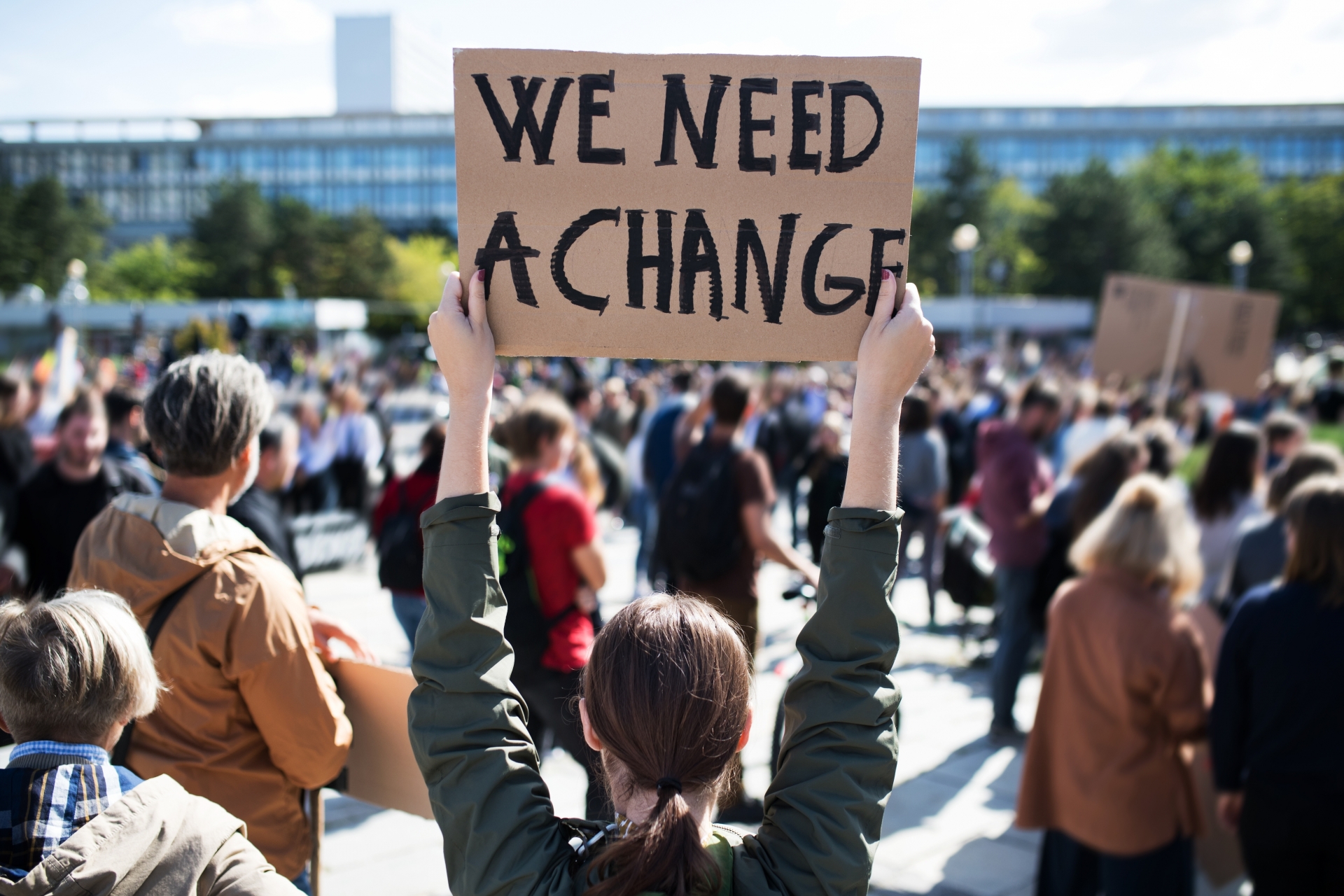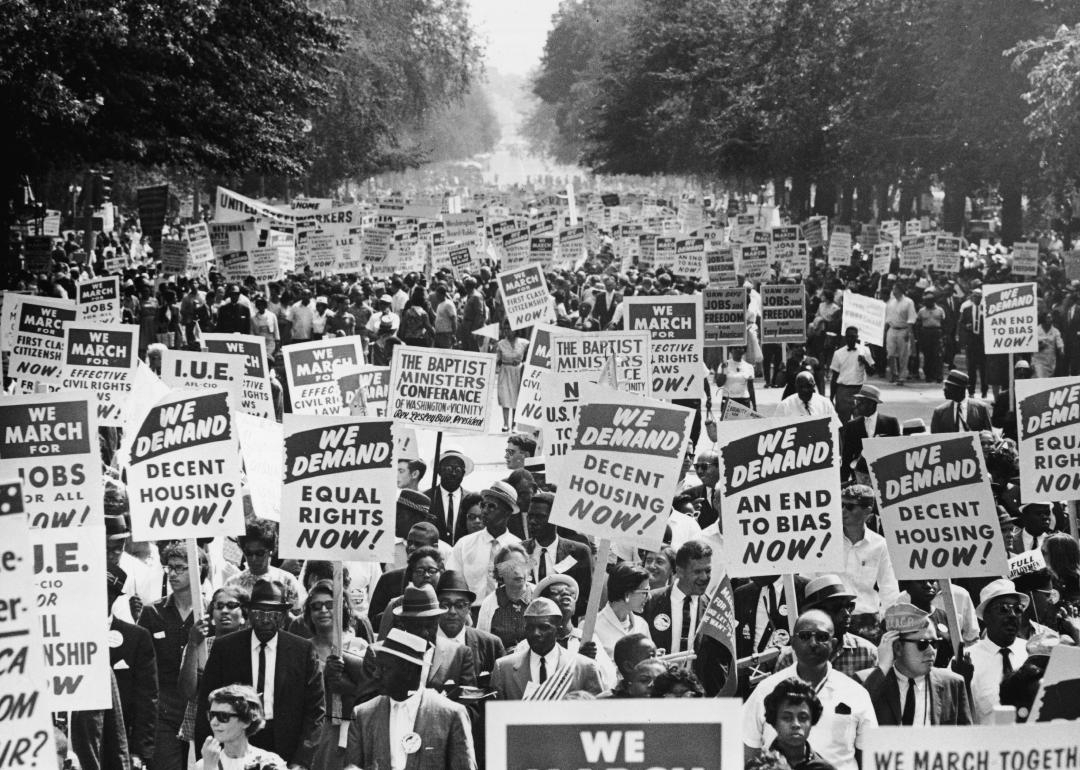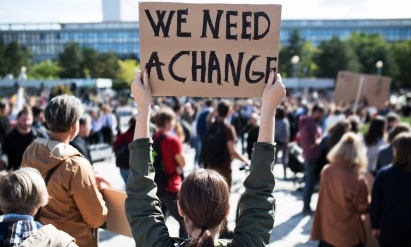Marketing in an “Us vs. Them” World, Part 3: Questions Every Marketer Needs to Answer
Oct 3
·
Reading time: 10 minutes
Article at a glance
- Consumers are pressuring brands to take a stance and actively participate in making the world a better place. If you decide to do nothing about a social issue, it still sends a message.
- We need to work on de-escalating conflicts and fighting for common humanity.
- Fighting for common humanity is more effective in eliciting social change than violence.
- Pick your battles to stay authentic.

Yet, not all brands want to be “social activism brands.” After all, the point of brand positioning is to make brands different, and you’re not different if you and everyone else are talking about the same things. For some brands, it makes sense to take on the problems of climate change, anti-abortion laws, or public health. In other cases, however, it goes against a brand’s values. Strategy suggests staying neutral to maintain a pre-established communication strategy. Yet, as we know from Part 2 of this series, staying silent is no longer the optimal option, as consumers are likely to interpret silence to mean a brand supports the other (wrong) side. It’s Sophie’s choice. So what to do?
The Trolley Problem

There here is a runaway trolley barreling down the railway tracks. Ahead, on the tracks, five people are tied up and unable to move. The trolley is headed straight for them. You are standing some distance away, in the train yard, next to a lever. If you pull this lever, the trolley will switch to a different set of tracks. However, you notice that there is one person on the sidetrack. You have two options:
- Do nothing, in which case the trolley will kill the five people on the main track.
- Pull the lever, diverting the trolley onto the side track where it will kill one person.
What do you do?
The beauty (and nightmare) of The Trolley Problem is that no matter what you do, the outcome is far from ideal. You could walk away and pretend the problem doesn’t exist but not doing anything isn’t a solution because if you do nothing, five people die. Refusing to make a choice is a choice, too, just like a brand deciding to stay silent sends a message into the world.
PS. I gave a speech about this recently, and when I asked marketers in the audience this question, 15 said they’d do nothing, and ten would pull the lever. The other half didn’t cast a vote, which means they each killed five people.
The Marketer’s Problem

You’ve prepared a new marketing campaign with your team based on pre-established brand positioning. Yet, recently things happened in the world, and if you launch the campaign as planned, you’ll inevitably engage your brand in a social issue that is not connected to how you want to position the brand. Many consumers will likely perceive your brand as political, and you’ll lose them as clients. If you decide not to launch the campaign, consumers will notice this and think you’re neglecting the social issue and supporting “the other side.” What do you do?
- Launch the campaign.
- Don’t launch the campaign.
The tough question you need to answer: Do we speak out or stay quiet and keep doing our thing?
I honestly don’t know the correct answer to The Marketer’s Problem and what your brand should do. It depends on many variables, including what products/services you sell, brand and company values, and approach to CSR, among other things. However, no matter what these are, one key question that all brand managers need to ponder and answer.One of the key points I wanted to make here is that staying silent is a choice too. It doesn’t matter whether you remain silent due to a deliberate, conscious choice or because you missed a social (media) movement happening. If you decide to do nothing, it still sends a message into the world. Whether you want to or not, you need to think about these issues and determine the best choice for your brand.
Do we speak out or stay quiet and keep doing our thing?
One of the key points I wanted to make here is that staying silent is a choice too. It doesn’t matter whether you remain silent as a result of a deliberate, conscious choice or whether you just missed a social (media) movement happening. If you decide to do nothing, it still sends a message into the world. Whether you want to or not, you need to think about these issues and determine the best choice for your brand.How, as a brand, can you contribute to creating a better, less polarized world? (Because that’s what consumers expect from you.)
I hope that most of you, dear readers, are reasonable people and like the idea of using your privileged position as a marketer to make the world a better place. In the old days, this often meant losing money because investing in a greater good (e.g., through CSR or sponsoring) reduced immediate profit. Now that consumer preferences and attitudes are shifting it is possible to create a win-win scenario, in which the world benefits and your brand benefits. How?Good intentions aren’t enough. That’s because we’re all part of the “us vs. them” reality. If we “just fight” for the greater good, we’re likely to flare up the existing conflicts. We need to work on de-escalating conflicts and fighting for common humanity.

#1: De-escalating conflicts
The problem with how we communicate — whether it’s brand communication or just us, people, talking — is that we all are a part of the “us vs. them” problem. We naturally identify with some groups and think their truth is the only truth; consequently, we denigrate “them.” If I believe COVID vaccines are effective at reducing the severity and spread of the disease, I’ll think of “anti-vaxers” as uneducated or plain stupid. If I believe in the free choice and strength of the human immune system, I’ll think of “pro-vaxers” as paranoid and brainwashed by media and government. If I’m from Poland or Ukraine, I’ll assume only bad things about Putin and Russians. If I were Russian, I’m my view on this conflict could be entirely different.When we stay in the “us vs. them” mindset, we naturally and inevitably escalate the conflict.
- We disagree. I say something to defend my opinion. You say something to defend your point of view.
- I feel attacked, so I attack back with more of my facts and my point of view.
- You then respond with a counter-attack, stronger emotions, more words, and more arguments to continue defending your point of view.
We take a topic or an issue and escalate it to something bigger than it originally was, fierce, often personal, very emotional, and pretty much impossible to solve… unless we change our communication strategy.
The way to overcome social polarization is to de-escalate conflicts. It’s hard (like, damn hard) because it means putting aside our egos and the need to be right and instead focusing on common agreement. It means letting go of winning.
Let’s look at a stages of conflict model (or think about the issue rationally, with a cool head and with personal agenda aside). Conflict de-escalation is the only way to go if we want to create a better, less polarized world. The question for you and your brand, therefore, is what and how can you do to help de-escalate conflicts?

#2: Fighting for common humanity, not the enemy
What to do if fighting the enemy is not the way to go? American political scientist Erica Chenoweth studied over 100 years of revolution, and one of the conclusions from her work is that fighting for common humanity is more effective in eliciting social change than violence. (Not that you and your brand would be violent, but any attempts to separate “us” from “them” are likely to lead to conflict. Keep reading.)The difference between fighting an enemy and fighting for common humanity is subtle. It’s the difference between “You’ve had it, and now it’s our turn” and “You’ve had it, and everyone deserves to have it as well.” It’s the difference between requesting or demanding equal marriage rights, healthcare access, or life in a country according to your values because it’s what all people deserve — “us” and “them.” The demands are framed in a way that makes “us” a part of “them” rather than placing “us” against “them.” It’s accepting that life is not a zero-sum game where if we get it, “they” have to lose, or at least be punished for having it earlier.
If you decide that your brand should get involved in social issues, make sure you work on building common humanity. Two ideas on how your brand can embrace this approach are:
- Show “them” in your communication. Research shows that mere TV exposure to people different than us (e.g., minorities, people we discriminate against) positively impacts reducing “us vs. them” divisions. Can you, as a brand, diversify whom you show in your ads?
- Hate promotes hate. Kindness promotes kindness. Can you, as a brand, make your social media platforms a kinder place?





